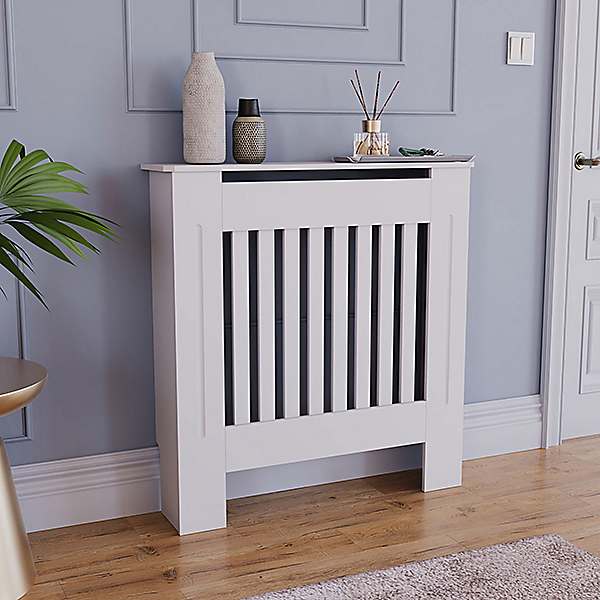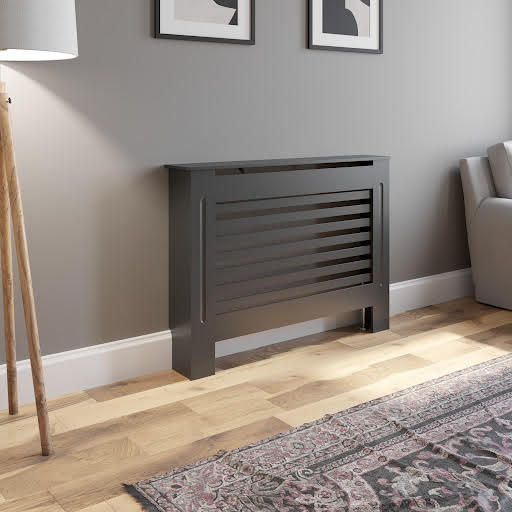Radiator Covers: Comprehending Products, Styles, and Advantages
Radiator covers serve both visual and functional functions within a home, supplying a variety of materials such as mdf, steel, and wood to fit different design choices. Choosing the right radiator cover entails understanding the nuances of products, layouts, and their associated advantages.
Sorts Of Products


Wood covers, usually crafted from hardwoods such as oak or maple, offer a classic, cozy appearance that complements conventional insides. Their durability and capacity to be stained or painted contribute to their versatility. Metal covers, generally made from steel or aluminum, are favored for their effectiveness and modern-day look, typically featuring sleek lines that boost modern rooms.
MDF, a manufactured wood product, is popular for its cost-effectiveness and ease of modification. It can be painted or completed to match existing decor while supplying a smooth surface area. Plastic covers, while much less common, are lightweight and resistant to wetness, making them ideal for humid atmospheres.
Eventually, the choice of material for a radiator cover need to straighten with the homeowner's style preferences, functional requirements, and the particular atmosphere where the cover will be mounted. Each material provides a distinct character, guaranteeing that there is a choice to fit every taste and setting.
Popular Layout Styles
Stressing visual appeal, popular style styles for radiator covers mirror a variety of preferences and interior decoration trends. Conventional designs frequently feature detailed woodwork and elaborate outlining, making them suitable for vintage-inspired or traditional interiors. These covers generally incorporate sculpted aspects, giving a warm and inviting feel to any kind of space.
On the other hand, contemporary layouts concentrate on minimalist visual appeals, characterized by tidy lines and underrated beauty. Materials such as steel or smooth wood with a smooth coating are frequently used, permitting these covers to mix perfectly right into contemporary rooms. Industrial designs, on the other hand, welcome raw materials like subjected metal and concrete, adding a vibrant declaration to loft or urban setups.
For those looking for an unique touch, bespoke styles offer personalization alternatives that cater to specific preferences, allowing home owners to select colors, patterns, and products that enhance their style. Furthermore, farmhouse-style covers incorporate rustic elements, featuring troubled wood and straightforward forms that evoke a cozy, country appeal.
Advantages of Radiator Covers
Radiator covers not only enhance the aesthetic allure of an area but likewise supply a number of useful benefits that make them a beneficial enhancement to any kind of home. One of the primary advantages is security, specifically in houses with children or animals. Covers decrease the danger of burns from warm radiator surface areas, ensuring a safer environment.
Additionally, radiator covers can enhance energy effectiveness. By guiding warm right into the space instead of permitting it to run away, they aid keep a regular temperature level, reducing heating prices over time. This is specifically helpful in older homes where radiator systems may be much less effective.
An additional remarkable advantage is sound decrease. Radiators can often create unwanted noises during procedure, and covers can aid smother these sounds, adding to a more serene living area. Furthermore, radiator covers can be functional, supplying added storage or screen space, thereby taking full advantage of the utility of often-overlooked areas.
Lastly, they can shield radiators from dust and particles, which can prevent performance and rise upkeep demands. With these incorporated benefits, radiator covers emerge as a sensible service for enhancing both the capability and style of any kind of home atmosphere.
Installation Factors To Consider
Installing radiator covers calls for cautious consideration to guarantee both capability and safety and security (Radiator cover). First, assess the measurements of your radiator and the surrounding space to make sure a proper fit. Exact dimensions are crucial; an uncomfortable cover can block warm circulation or create security hazards
Next, review the material of the cover. While wood supplies aesthetic charm, steel options may give better toughness and warmth resistance. Think about the weight of the cover as well; much heavier covers may call for extra assistance or reinforcements to avoid sagging or damages with time.
Ventilation is one more important facet. Covers should include sufficient airflow to avoid overheating and keep efficient heating. Search for styles with slats or openings that allow warmth to flow without obstruction.
In addition, ensure that the cover is safely mounted to avoid accidents, especially in homes with family pets or youngsters. Radiator cover. It's suggested to adhere to the supplier's installation standards very closely and, if necessary, get in touch with a you could try here professional for complex installations
Maintenance and Care Tips
Correct upkeep of radiator covers is crucial for ensuring their long life and optimal efficiency. For repainted or wood covers, take into consideration an ideal gloss or protective finishing to maintain their look.
Evaluate the covers regularly for indications of wear or damage, such as fractures or peeling off paint. Resolving these issues quickly can stop further degeneration. Ensure that the covers are safely fastened and look for any type of loose screws or installations, as vibrations from dig this the radiator can loosen them gradually.
In colder months, prevent positioning hefty items or ornamental things on top of the radiator covers, as this can hinder warm distribution and create unnecessary stress and anxiety to the structure. Last but not least, consider seasonal maintenance by removing the covers for thorough cleansing and assessment during warmer months when the furnace is non-active. Adopting these easy care suggestions will improve the efficiency and visual charm of your radiator covers, guaranteeing they offer their purpose properly for many years to come.

Final Thought
In summary, radiator covers serve as practical and aesthetic improvements to domestic rooms. The varied series of products, consisting of hardwoods, steel, plastic, and mdf, allows for placement with various layout styles such as conventional, modern, industrial, and farmhouse. The advantages of these covers extend past safety and energy performance to include added storage and dust protection. Mindful consideration of setup and upkeep further ensures the durability and performance of radiator covers in any home atmosphere.
Radiator covers offer both visual and practical purposes go to this website within a home, supplying a variety of materials such as hardwood, metal, and MDF to fit various layout preferences. Picking the ideal radiator cover involves comprehending the nuances of materials, styles, and their connected advantages.Stressing visual allure, preferred layout styles for radiator covers mirror an array of preferences and indoor layout fads.Radiator covers not just improve the aesthetic appeal of a room but also offer several practical benefits that make them a worthwhile addition to any home. Take into consideration the weight of the cover as well; larger covers may require additional assistance or reinforcements to avoid drooping or damages over time.